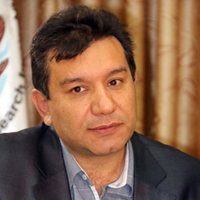Investigating the effect of different ratios of calcium to magnesium in irrigation water on growth characteristics and yield of grain quinoa (Chenopodium quinoa Willd.)
Quinoa (Chenopodium quinoa Willd.) is a facultative halophyte with very high adaptability to varied climatic conditions and high nutritional value. Different quinoa cultivars can have economical and stable yield in saline soil and water conditions. In addition to salinity, the chemical composition of irrigation water and thus soil solution affect the uptake and transfer of water and nutrients, and so plant yield. The intensity of this effect depends on various factors such as plant species. Calcium to magnesium ratio (Ca/Mg) is one of the quality indicators of irrigation water that can affect soil physical conditions and nutrient uptake independent of salinity level. A Ca/Mg < 1 and exchangeable magnesium percentage more than 25% in irrigation water are considered high enough to reduce soil quality and crop yields. Currently, frequent droughts and high water extraction have caused a sharp drop in water levels, increase in salinity, and in some cases a decrease in the Ca/Mg in the groundwater of most arid regions of the country. Since the effect of Ca/Mg in irrigation water on growth and yield of quinoa has not been studied so far, so the aim of this study was to investigate the effect of different Ca/Mg in irrigation water on growth parameters and quinoa grain yield in saline conditions.
To study the effect of different Ca/Mg of irrigation water on quinoa growth and yield, three separate experiments in a randomized complete block design with four replications were conducted at the Research Greenhouse of Soil and Water Research Institute in 2018. Experimental treatments included three different Ca/Mg in irrigation water consisting of 0.25, 0.5 and 1, which were made by sodium chloride, magnesium and calcium as nutrient solutions fit to the salinity tolerance threshold of quinoa at different growth stages. In the previous research, yield reduction thresholds for Titicaca cultivar at different growth stages in a soilless culture (perlite) were a: 8 dS m-1 for emergence, b: 15 dS m-1 for flowering and c: 20 dS m-1 for grain filling. To conduct this research, 100 quinoa seeds were planted in pots, and the pots were irrigated with 8 dS m-1 water along with the desired Ca/Mg treatments. After establishing the quinoa seedlings and thinning to six plants per pot, pot irrigation was done with 15 dS m-1 salinity along with the desired treatments. After ensuring the end of the flowering stage, the remaining pots were irrigated with 20 dS m-1 salinity with the desired treatments until physiological ripening. Finally, the analysis of variance of the data was performed using SAS software and the means were compared with the protected LSD at 5% probability level.
The results showed that the emergence percentage and non-uniformity of quinoa were not affected by Ca/Mg of irrigation water, however, increasing the magnesium amount significantly improved the emergence rate of quinoa seeds. Although the results showed that the fresh and dry weight at the flowering stage was significantly affected by Ca/Mg of irrigation water, the yield and yield components were not significantly affected. Therefore, the quinoa growth and yield are not affected by the ionic composition of irrigation water in terms of low Ca/Mg, however, the composition of absorbed and accumulated ions in plant tissues are significantly changed. So, compared to other conventional crops, quinoa has the potential to produce economic yield in saline conditions and is not affected by the Ca/Mg of water sources.
The results of this study showed that different Ca/Mg in irrigation water do not reduce the growth and yield of quinoa. Therefore, if the salinity tolerance threshold of the plant is considered, low water quality in terms of high magnesium concentration does not damage the plant and so can be cultivated with saline water sources such as diluted seawater.
- حق عضویت دریافتی صرف حمایت از نشریات عضو و نگهداری، تکمیل و توسعه مگیران میشود.
- پرداخت حق اشتراک و دانلود مقالات اجازه بازنشر آن در سایر رسانههای چاپی و دیجیتال را به کاربر نمیدهد.




